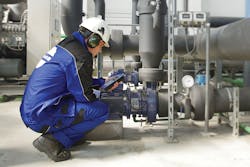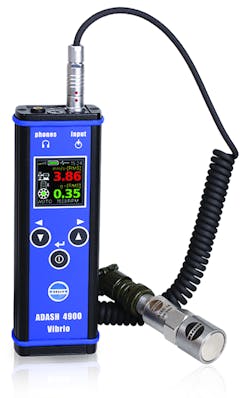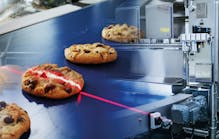5 considerations for reassessing your lubrication regime
Predictive maintenance (PdM), as you’ve probably heard by now, is the science of predicting when a piece of equipment is going to require maintenance or replacement. It replaces reactive maintenance (i.e., "If it ain’t broke, don’t fix it") and preventive maintenance (servicing at regular intervals, whether it needs it or not). If you haven’t heard about PdM yet, it’s high time you have. PdM is not based on intuition, guesswork or experience. Instead, it’s based on a set of scientific measurements.
What kind of measurements? They come from various types of sensors attached to production equipment. At large, well-equipped facilities, such as automakers or massive food packaging operations, these measurements are made automatically through sensors that are always connected. The data sets they generate are then run through specialized software that spits back recommendations based on usage, lubricant levels and anything else that might be relevant to the application.
Sounds expensive, right? Well, as a matter of fact, PdM is an excellent way to save money. In 2017, in an article on IOT-analytics.com, PdM practitioners reported efficiency gains of 25% to 30%. That’s a huge number, enough to convince even the most cynical plant manager or skeptical board member that this is a worthwhile practice.
But the setup costs can be daunting. For smaller places — for example, a struggling family-owned business, or a recent startup — the bottom line may already be looming dangerously close. Equipment and software that can cost tens or even hundreds of thousands of dollars is out of reach.
The Adash Vibrio is an example of a handheld calibration tool and vibration sensor. Courtesy of AdashAmerica.com
Luckily, there are easier and cheaper ways to go about PdM for companies that don’t have that kind of coin. And because so much of PdM for production equipment hinges on lubrication, reassessing your lubrication regime is an excellent first step toward implementing PdM in your workplace. Start off by asking yourself these questions:
1. Are you using multiuse lubricants?
Multiuse lubricants are just what they sound like — lubricants that can be used in multiple situations, as opposed to extremely specialized products that only have one or two uses. The benefits of multiuse lubricants are many. Multiuse lubricants:
• Offer better value
• Take up less space
• Require less training to use correctly
• Are easier to store in compliance with safety regulations
In food packaging or production facilities, managers should look for lubricants that are both food-safe and able to fulfill all their other needs as well. You don’t need 10 different lubricants if one can do the job and holds an NSF H1 rating (food-grade lubricant).
2. Have you done cost comparisons on your lubricants?
Cost comparisons can seem daunting for those who really don’t like math. But they aren’t nearly as bad as they seem. Once you have the numbers in black and white, you can make more intelligent decisions.
For example, many production facilities use the cheapest lubricant they can get away with in the mistaken belief that they’re saving money. Mineral oil is a common example. Retailing for roughly $10 a gallon, it’s cheap, it’s food safe, and it is an oil, so it must be a good lubricant, right? Wrong. Consider how much more mineral oil you need to use (because it drips everywhere), how inefficient it is at preventing chain elongation (because it collects particles and forms the dreaded abrasive paste that hastens pin and bushing wear), and how unsafe it is (because it drips constantly and puddles on the floor).
Now compare that to a lubricant that doesn’t drip and won’t collect particles. It may cost more than $300 a gallon, and to the untrained eye, that seems like nothing more than a rip-off. But consider the following factors:
• The expensive lube lasts many times longer
• It greatly extends chain and bearing life (therefore, you are also saving on repair and replacement costs for those and similar items)
• Downtime is either greatly reduced or eliminated altogether … and there isn’t a company in the world that can afford the cost and inconvenience of downtime.
Don’t just make assumptions based on price tags. Write down the numbers and compare them side by side. How much are you spending every month on cheap lube, chain and bearing replacements, labor and downtime? Now, how much would that higher-quality lube really cost if you subtracted the cost of labor, parts and downtime?
3. Do you own handheld calibration tools?
You don’t need a lot of fancy sensors or expensive software to check on how close your machines are to needing lubricant. Numerous handheld devices exist that can be used on multiple machines throughout a facility. They measure vibration through built-in sensors and microphones and offer immediate visual feedback based on how loudly the machine is running. As more lubricant is pumped in, the vibration pitch and frequency will change, and the device will immediately reflect that in its feedback.
These handheld devices are an excellent, low-cost investment for a smaller facility where buying an expensive network of sensors and the accompanying software is not an option.
4. Do you know how much your grease guns produce per squeeze?
Not only is every type of grease gun a little different, but different lubricant tubes produce different amounts. Here’s a simple test you should perform on all your guns:
• Put a rain measuring gauge or similar volumetric measuring gauge on a scale.
• Zero it out.
• Pump the gun into it 10 times.
• Use a flat-ended object to pack the grease down and make sure it’s level.
• Divide both the weight and the volume by 10.
• Now you know how much that gun gives per shot in terms of both weight and volume.
Why is this information important? Because:
• Over-lubricating is just as dangerous as under-lubricating
• It is important to know the rate at which your lubricants are dispensed so that you can make accurate predictions of consumption
5. Is your OEM lubricant recommendation still current?
It’s worth checking on your OEM lubricant recommendation, especially if your equipment is several years old. Manufacturers don’t always inform existing clients of changes to lubricant recommendations. It’s worth the time to go back and look at the OEM documentation to clarify what they recommend using because sometimes what it says to use is very general. If you have your eye on a new lubricant but aren’t sure what the manufacturer will say, call them and ask. They might say your warranty is still covered, and then you’ve got the all clear.
By implementing these steps, the savvy manager will almost certainly end up saving plant or building owners noticeable amounts of money within a couple of months. Predictive maintenance is for everyone, and lubrication is a major part of it.
William (Bill) Kowalski is the director of online operations for Interflon USA Inc. You can write to him at [email protected] and visit him online at interflonusa.com.



